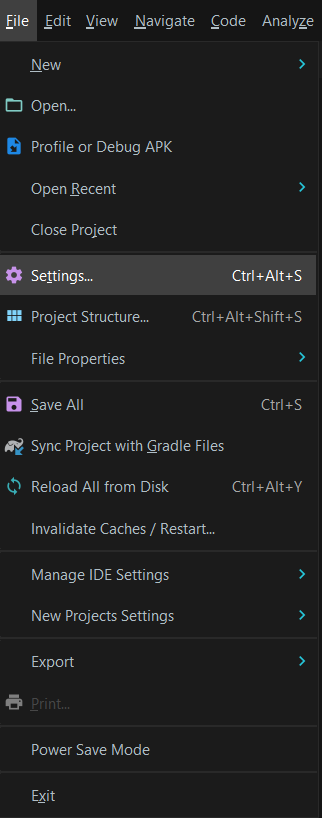

- Sdk location not found android studio install#
- Sdk location not found android studio full#
- Sdk location not found android studio for android#
Sdk location not found android studio for android#
I hope this saves someone some hours of pain. Method 1: For Android Studio Version 4.2 and Above Navigate to File > Project Structure > SDK Location. If you are still having problems, you may need to set the Project SDK. In this tutorial, well solve all types of SDK problems in Android Studio including SDK path and Missing SDK.Show your Support at Patreon.
Sdk location not found android studio install#
after sync is complete, go back and check the box of android sdk platform-tools (this will install a fresh one with new adb.exe) wait till it is done and sync project and then you are good to go.Define location with sdk.dir in the local.properties file or with an ANDROIDsdk location not found. (this will uninstall the platform tools from your ide) wait till it is done and then your gradle will sync. Android Studio sdk location not foundGradle sync failed: SDK location not found.
Sdk location not found android studio full#
uncheck android sdk platform-tools and select ok. The solution that worked for me is that I had to re-install AndroidStudio to a new location in a way that the full path to it contains no spaces, in the image below will you notice that flutter was cropping my full path because it contained a white space when I use the command flutter config -android-studio-dir C:Program FilesAndroidAndroid. Run with -info or -debug option to get more log output. Try: Run with -stacktrace option to get the stack trace. go back to android studio and from where you left off navigate to sdk tools (this should be right under android sdk location) Define location with an ANDROIDSDKROOT environment variable or by setting the sdk.dir path in your projects local properties file. Define location with sdk.dir in the local.properties file or with an ANDROIDHOME environment variable. close Android Studio, open the Task Manager and finish the ADB.exe process if it's running and then delete the platform tools folder. check the platform tools folder and see if you would see anything like adb.exe (it should be missing probably because it was corrupted and your antivirus or windows defender has quarantined it). Windows=> c://Users/johndoe/AppData/local/android (you can now see the sdk.) The sdkmanager tool is provided in the Android SDK Command-Line Tools package. If you're using Android Studio, then you don't need to use this tool, and you can instead manage your SDK packages from the IDE. navigate to file explorer on your system, and locate the file path, this should be found something like Options The sdkmanager is a command-line tool that lets you view, install, update, and uninstall packages for the Android SDK. 
Parallel Stack Filtering You can use the updated Parallel Stack filtering options that let you selectively display or hide specific threads or frames.

view android SDK location (this will show you your sdk path) Visual Studio now automatically fixes indentation for you when you copy code from Visual Studio and paste it in another application. on your android studio at the top right corner beside the search icon you can find the SDK Manager.







 0 kommentar(er)
0 kommentar(er)
